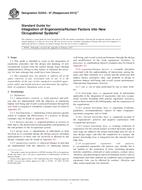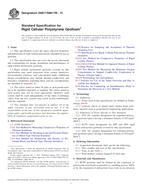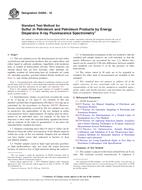1.1 The purpose of this method is to define a general procedure for determining an unknown thermal neutron-fluence rate by neutron activation techniques. It is not practicable to describe completely a technique applicable to the large number of experimental situations that require the measurement of a thermal-neutron fluence rate. Therefore, this method is presented so that the user may adapt to his particular situation the fundamental procedures of the following techniques:
1.1.1 Absolute counting technique using pure cobalt, pure gold, or cobalt-aluminum or gold-aluminum alloy,
1.1.2 Standard foil technique using pure gold, or gold-aluminum alloy, and
1.1.3 Secondary standard foil techniques using pure indium, indium-aluminum alloy, and dysprosium-aluminum alloy.
1.2 The techniques presented are limited to measurements at room temperatures. However, special problems when making thermal-neutron fluence rate measurements in high-temperature environments are discussed in 8.2. For those circumstances where the use of cadmium as a thermal shield is undesirable because of potential spectrum perturbations or of temperatures above the melting point of cadmium, the method described in Test Method
1.3 Table 1 indicates the useful neutron-fluence ranges for each detector material.
1.4 The values stated in inch-pound units are to be regarded as the standard. The values given in parentheses are for information only.
1.5 This standard may involve hazardous materials, operations and equipment. This standard does not purport to address all of the safety problems associated with its use. It is the responsibility of the user of this standard to establish appropriate safety and health practices and determine the applicability of regulatory limitations prior to use.
Product Details
- Published:
- 06/10/1997
- Number of Pages:
- 9
- File Size:
- 1 file , 120 KB


